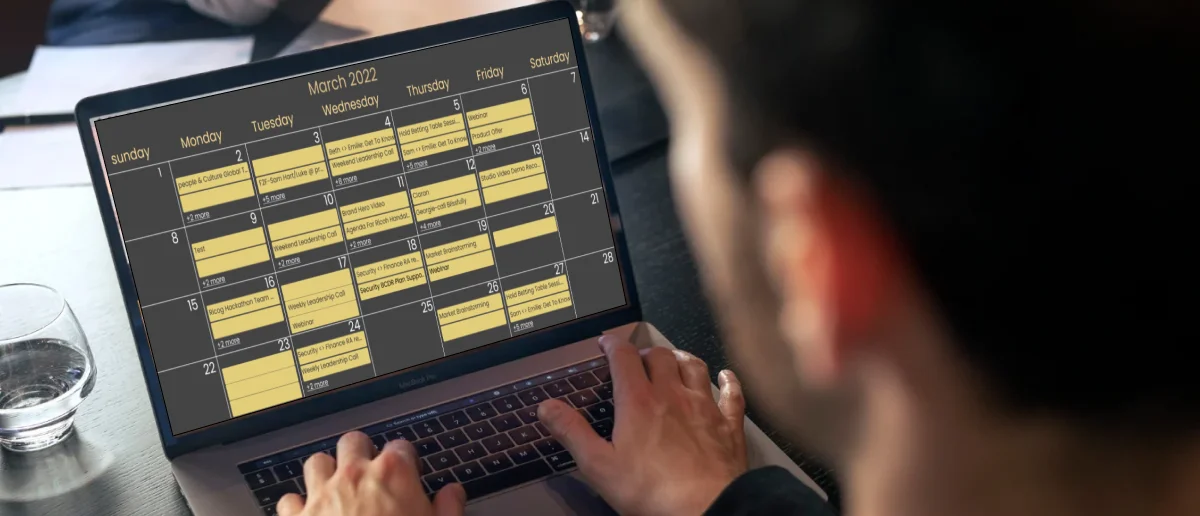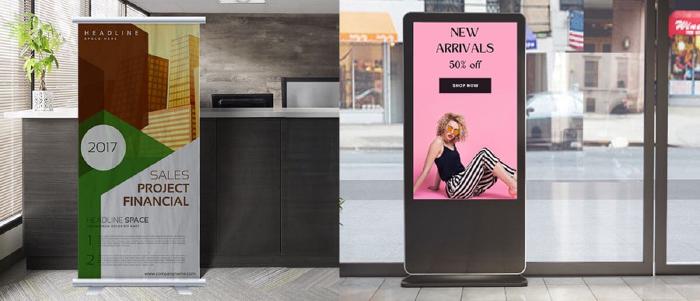
Dec 21 2023
8 min read


Mar
A content calendar is a written record that helps you to plan all the upcoming contents to be published and also track when and where to publish them. Content calendars are used extensively by editorials, marketing and media & advertising teams.
If we discuss more specifically in terms of digital signage, content calendars provide a structure for planning, organizing, scheduling and publishing content across different screens associated with an organization.
Since day-parting and media scheduling is a prominent feature of many digital signage software solutions, therefore a content calendar helps to keep every detail available at the fingertip, so everything can be planned ahead and planned better.
A digital signage content calendar can be as detailed as you wish; it can include columns on dates of publication, type of campaign, location, digital platforms, time and target audience.
Since childhood, many of us have been jotting things down in a planner to remember important things to do during a month. In retrospect, those planners came in handy to keep us on track. Content calendars provide similar benefits too. It can be crucial in managing the vast load of screen content ideas that you may have.
Here are some significant advantages:
Organizing content
Planning and organizing content becomes so much easier with the help of a content calendar. Imagine companies like Amazon or Mcdonald’s; they have massive networks, numerous stores, and different campaign requirements for different locations. It becomes only possible for these networks to function error-free with a content calendar.
Time-saver
These digital signage content calendars can spare the creators the humongous task of preparing and publishing content on a daily or sometimes even hourly basis keeping in mind the target audience. It works as a time-saver.
Collaboration
Different stakeholders, such as creative teams, accounts section, external agencies, brand managers, and so on, are involved in all big organizations. They all need to be kept updated about the various campaigns running on digital signage. One can share the plans with everyone and collaborate effectively using a content calendar.
Maintaining uniformity
A content calendar helps maintain uniformity, as all the planning and scheduling can be done beforehand. It ensures consistent messaging across all digital signage systems. Consistent messaging, in turn, helps strengthen the brand identity and image. It saves a lot of time and inconsistencies, allowing the employees to concentrate on other important work.
Long-term planning
A content calendar can help you plan your content strategy for months or even years in advance. This lets you strategize your digital signage content for special events like holidays or seasonal celebrations.
Long-term planning also helps the businesses to gauge their long-term goal success through long-term metrics like quarterly or yearly increases in revenues, expansion in market share such as an increase in distribution channels, increase in the membership of loyalty programs, etc.
Creating a content calendar is no rocket science with all the sophisticated tools available. You can quickly create beautiful, eye-catching, and useful content calendars without much hassle. But, to make your desired content calendar, you must follow certain steps to design it well. It requires a well-thought-out plan and vision. Here is a simple step-by-step guide for you:
The first step is to interpret what you want your digital signage display to achieve. You need to ask yourself: Who will be our target audience? What do I need the display for? Should it include promotional content or concentrate on the increment of sales? Once the goals and objectives are determined, it’s easier to begin designing a content calendar.
You must determine the content you want to display that aligns with your goals and customer preferences. What would you like on your digital signage display? It could be images, videos, texts, or a combination. Analyze what content would appeal to your audience and fulfill your objectives.
Let’s say you run a beauty salon; you may use the content calendar to strategize the messaging theme aligning it with customer preferences, seasonal trends, and changing demands of the beauty industry. For example, in April, you can focus on ‘Earth Day’ and introduce organic facials, promote eco-friendly beauty products through ad campaigns, or emphasize sustainable beauty practices.
Similarly, the messaging theme could be synced up with the summer needs during the summer months of May and June. Anti-tan products could be brought to the fore, and campaigns could be displayed around it. You might introduce offers on de-tan facials and body scrubs.

It is essential to set a schedule for displaying the content. A clear outline must be prepared that marks when and where each piece of content has to be shown. Also, how frequently must the contents be updated- daily, weekly, or monthly?
Every detail must be on the content calendar for smoother content display management. Most digital signage content management systems like Pickcel allows scheduling communications on digital signage.
Remember that flexibility is crucial. Always keep some room for last-minute adjustments and changes in plans. It makes the accommodation of unexpected changes and additions easier. It is good to plan but try not to fill every slot of your content calendar. It’s a smart decision to keep some buffer time in hand between content creation and publication to allow accommodation of changes.
Next, create a spreadsheet using Google Sheets. It is one of the best and simplest tools to create a content calendar, with many useful features like conditional formatting.
You can also easily combine Google Sheets with automation tools like Zapier & data visualization tools like Google Data studio. A smooth flow of data and information is possible among various digital platforms involved in the complete lifecycle of a digital signage campaign.
Last but not least, it is vital to keep evaluating the content to make adjustments on time and update content as and when required. Regular reviewing helps in maintaining the better performance of your digital signage campaigns. It ensures that your audience gets exciting and relevant content every time. A content calendar helps track and evaluate the digital signage content by providing a consolidated view of all the activities around your digital signage campaigns.
A content calendar evaluates by tracking metrics such as the number of views and shares of each piece of content. It helps identify customer trends. It also helps improve the quality of the content by spotting shortcomings and giving you the scope to create content that suits the audience’s needs better.
A content calendar can also help you evaluate whether your campaigns are reaching their goals. For example, suppose your objective is to increase your customer base. In that case, it can track metrics like social media impressions and website traffic to determine if you are meeting expectations or not.
Before the internet engulfed the world, content calendars were created manually, but with the growth of digital media, many advanced tools have been used. Google Sheets is an easy option for designing your content calendar.
Let us discuss a few tips to make it interesting:
Use color code: You can choose colors for easy identification based on store locations, admins, content type, run time, etc.
Keep it simple: It is always better to keep your calendar clutter-free. Do not stuff it with unnecessary information. For example, date, run time, screen IDs, and content types are essential information but try to avoid including redundant information like admin name, number of stores, display type, and so on.
Conditional Formatting: Conditional formatting is a feature in Google Sheets that enables you to format cells automatically when some conditions are provided. For example, you can highlight upcoming events or color-code various types of content in the calendar. It can also help in spotting errors. Say you set criteria that every time the submission column crosses its deadline or the word count column shows a lower-than-expected count, there will be a certain color highlighting.
Bring in automation: Google Sheets can be easily combined with automation tools like Zapier & data visualization tools like Google Data studio. These tools help in connecting your Google Sheets to other apps. For example, you can create a Google Sheet with all the information you want on your social media and customize the Zapier. It will put specific information on your social media as and when directed by you.
Let us look at an example of how the digital signage content calendar of a supermarket chain might look on a Google Sheet:

Now, don’t you think designing your digital signage content calendar is a cakewalk? Go ahead and create your content calendars using these simple steps and enjoy smooth operations of your digital signage displays!
To further ease up your process of content distribution on digital signage, sign up free with Pickcel and unlock advanced benefits like easy content scheduling, 60+ content apps to drive real-time and relevant media on screen, interactive display solutions, and much more.
Schedule a demo with us and learn how Pickcel signage solutions can help you take your business to new heights.
Take complete control of what you show on your digital signage & how you show it.
Start Free Trial Schedule My Demo
Dec 21 2023
8 min read

Dec 19 2023
6 min read

Dec 14 2023
7 min read

Dec 8 2023
8 min read